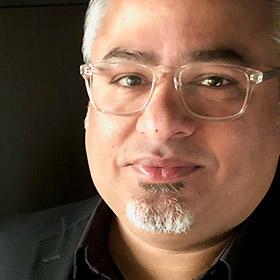May 05, 2023
Ideally, all agency teams would deeply understand their clients’ business needs. They’d educate them on capabilities and tools. They’d show them different ways their biggest concerns could be addressed. And they’d have dynamic consultative dialogues that would build strong, trusting relationships that would drive future client-agency initiatives. Yet this type of two-way engagement happens far too infrequently.
What gets in the way? Foremost, it’s the way agencies are designed. Though they’re built around selling craft solutions like creative, analytics, and technology, the account teams don’t always pass along deep information to craft folks. Consequently, the craft folks have limited exposure to each client’s business and merely deliver products against briefs.
Additionally, the majority of employees working at agencies spend most of their careers on the agency side. This further lowers their general knowledge and understanding of the corporate landscape. While there may be an overlap (sometimes), agency teams are often driven to create state-of-the-art, award-worthy solutions rather than those best suited to address clients’ business challenges.
Together, these problems can sometimes leave clients dissatisfied and frustrated rather than feeling as if they’re being well-understood. While clients can better define their needs, it’s not up to the client to make the changes necessary to overcome their challenges. That responsibility lies squarely on the agency and its people.
Strategies to Improve the Client-Agency Relationship
If you’re leading an agency, you may be unsure of how to move forward so you can better help your client population. Try starting by applying the following suggestions.
1. Resist the desire to have a perfect solution.
As experts at your craft, you and your team will always be tempted to create and deliver perfect solutions for every client's problem. The issue with this tactic is that perfection can be the enemy of getting things done.
Instead of crossing every T and dotting every I, consider the value of getting “quick and dirty” (lean and agile) solutions implemented. Sometimes, these types of products can plug the leaks in the proverbial bucket and deliver results for the client's. You can still work toward longer-term, more “perfect” solutions. In the meantime, though, you’ll give your clients something better than what they currently have.
For example, let’s say that your client wants a higher performing website. While a full redesign of the site might be the right long-term solution, quick optimizations to the legacy site could be a smart way to deliver immediate performance improvements. After making those optimizations, you can begin designing and developing a replacement site to be deployed later.
2. Accept the need for a team cultural shift.
Starting with you and your fellow leaders, start looking at your processes, like how you develop briefs. What is your current workflow? Do you take a consultative, collaborative approach? Are you focused on using terms that your clients can relate to, as well as sharing best practices from theirs and other industries?
Moving toward an authentic “we go the extra mile” cultural mindset can close gaps between you, your internal team, and your clients. After all, when clients know you’re doing what it takes to see everything from their perspectives, they’ll feel more comfortable bringing up other challenges. Plus, they’ll be more open to sharing their needs.
As an example, assess if more frequent check-ins along the project journey where you're sharing work in progress makes sense. This way the clients can provide feedback and you can make tweaks along the way rather than waiting for a big milestone deliverable that does not meet their business needs and needs rework.
3. Augment agile marketing methodology practices with the design of two work “swim lanes.”
Agile marketing methodology is grounded in the philosophy of developing incremental features and functionality while keeping the long-term vision top of mind. Nevertheless, agile techniques can be hard for big-idea architects to follow because they’re drawn toward complex projects. The workaround to make sure you get the best of agile methodologies is to have two “swim lanes” of work. The first lane’s team members will be focused on short-term gains and made up of strategists who can leverage data-driven insights. The other team will identify long-term, “perfect” solutions.
Let’s say a client comes to you for assistance optimizing their customer experience across their entire marketing funnel and channels. Rather than concentrating on the big picture strategy from a narrow, “perfect” vision that may take years to execute, work with the client on the small, incremental adjustments to the customer experience that could deliver immediate results and learnings. As you move slowly toward the full-scale effort, you’ll be able to make other pivots along the way. Ultimately, you’ll deliver a quality end product, but it won’t take forever.
Both lanes need to integrate so all team members know what’s happening and can see what solutions are being implemented and what is in the works. By working in tandem, they can move the needle appropriately via short- and long-term marketing strategies — and clients can see the near real-time and future benefits of working with your agency.
Being good client consultants is something that isn’t necessarily intuitive when you're in the thick of it all. But the skills necessary to promote a higher degree of collaboration and trust aren’t difficult to develop. They just require a bit of retooling of your processes, mindsets, and operations so you can stand out and be successful.
At RAPP, we strive to follow the principles outlined above in order to deliver maximum value for our clients and their businesses.


